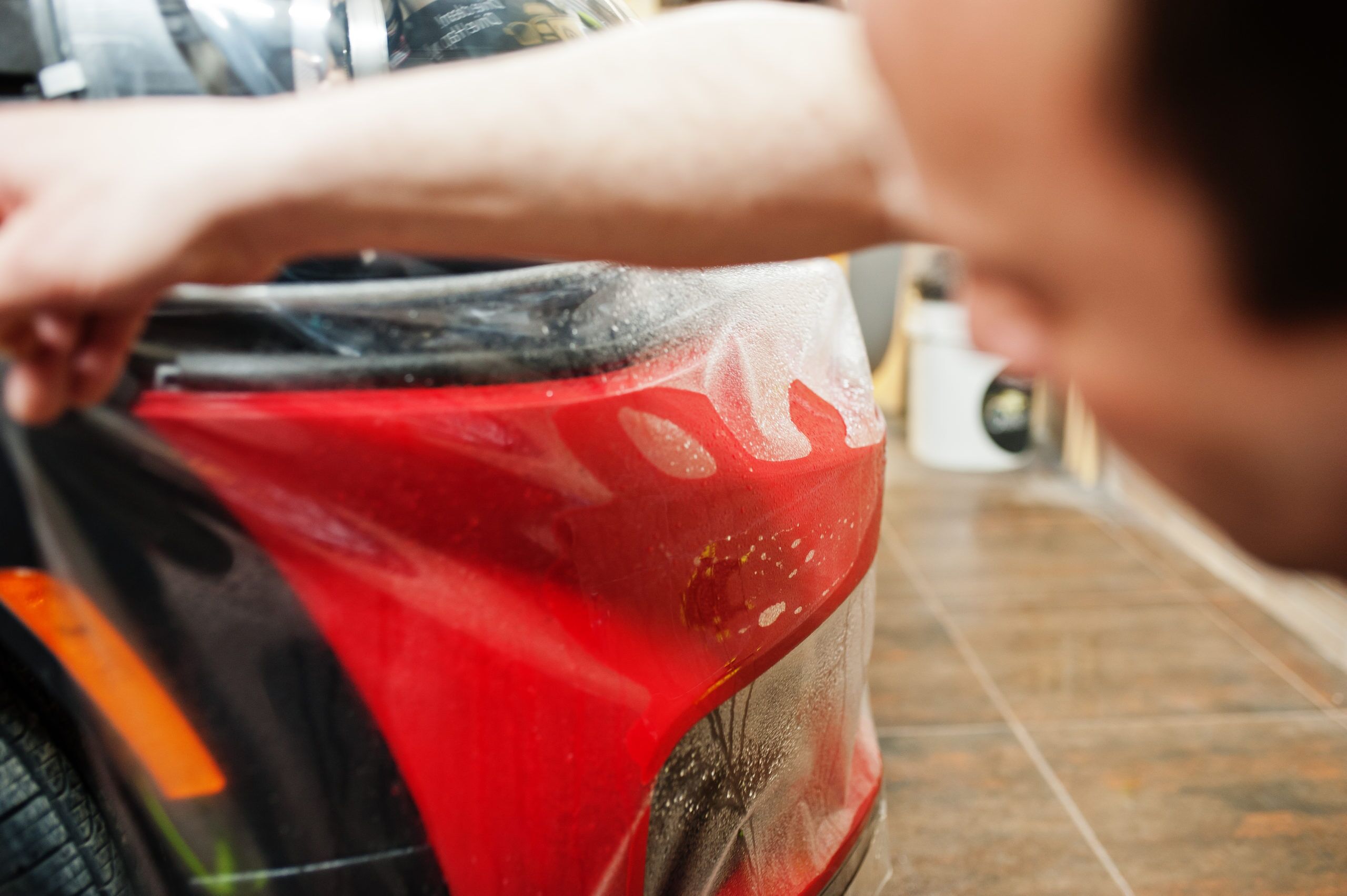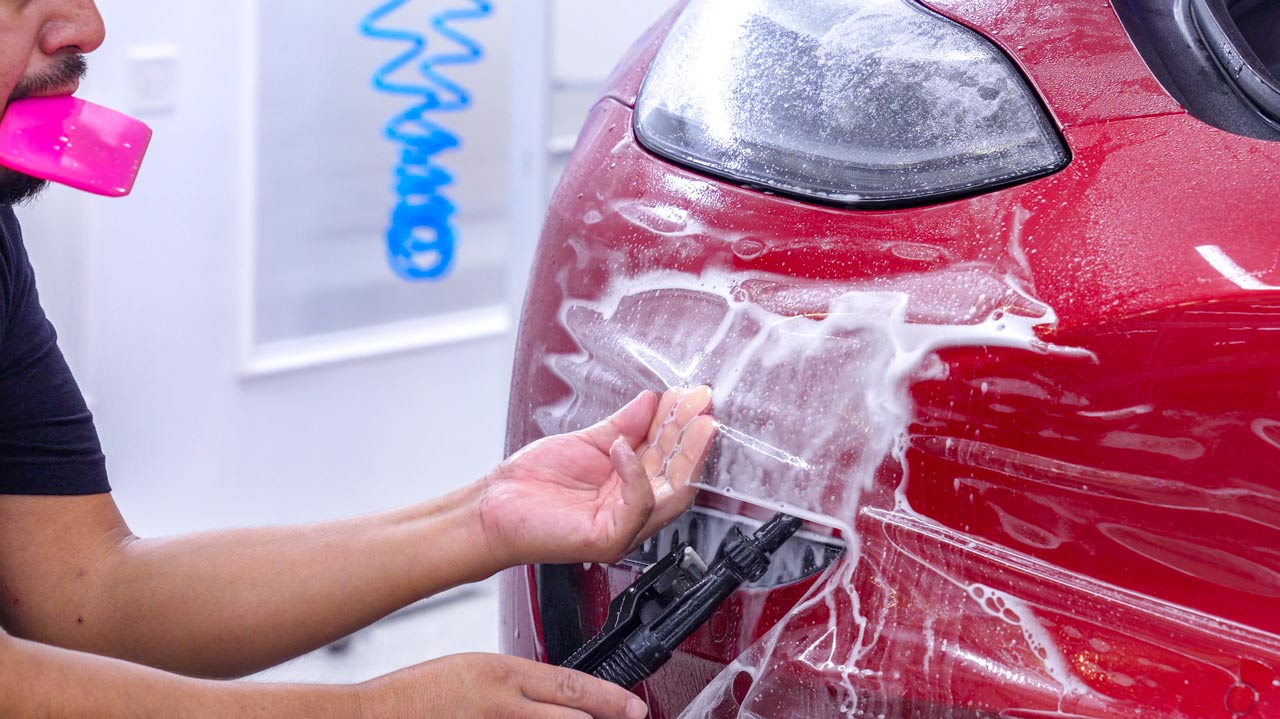Change Your Vehicle's Look with Top notch Paint Protection
Change Your Vehicle's Look with Top notch Paint Protection
Blog Article
Comprehending the Different Sorts Of Paint Protection Available for Cars
Navigating the myriad of paint security options for vehicles can be a complicated yet important task for automobile proprietors aiming to preserve their financial investment's appearance and worth. From the acquainted routine of using standard wax to sophisticated services like ceramic coverings and paint defense films, each method provides distinct benefits and obstacles.
Conventional Wax
Typical wax continues to be a popular option for auto enthusiasts looking for to secure their lorry's paintwork. Esteemed for its capacity to enhance the visual allure of vehicle finishes, standard cars and truck wax normally includes all-natural ingredients, such as carnauba wax, beeswax, and different oils. These components are combined to create an item that offers a deep, glossy sparkle, highlighting the shade and depth of an automobile's paint.
When used, standard wax creates a sacrificial layer that shields the paint from ecological impurities like dirt, crud, and light UV exposure. It does not bond chemically with the paint surface area, as some modern-day alternatives do, the wax's protective layer is efficient in repelling water and preserving a tidy outside. However, this type of security usually requires regular reapplication to preserve its effectiveness, as the life-span of traditional wax is commonly restricted to a couple of weeks or months, depending upon ecological problems and vehicle usage.
Application of conventional wax is commonly simple, entailing the application with an applicator pad and buffing to a high gloss. Regardless of innovations in paint defense modern technology, typical wax remains a relied on option for those valuing traditional methods and aesthetics.
Paint Sealants
In comparison to traditional wax, paint sealers use a longer-lasting service for safeguarding a vehicle's paintwork. Commonly created from synthetic compounds, repaint sealers are developed to offer durable defense versus ecological impurities, UV rays, and small abrasions. Unlike wax, which may require constant reapplication, a high-grade paint sealant can last anywhere from 6 months to a year, depending upon driving conditions and upkeep routines.
The application process for paint sealers is normally simple, needing a clean, dry surface area for optimal adhesion. When applied, sealers form a resistant obstacle that boosts the automobile's gloss and depth of shade, matching the aesthetic charm provided by wax. Significantly, the synthetic nature of sealers allows them to bond much more effectively with the automobile's surface, creating a much more long-lasting shield.
In addition, paint sealants are especially advantageous for car owners looking for to lessen upkeep time while maximizing security. They supply resistance to common issues such as water spots and chemical etching, making them a functional selection for those that regularly drive in rough weather or browse urban settings. On the whole, paint sealers offer a effective and reliable methods of keeping a car's look and resale value.

Ceramic Coatings
While paint sealers give a superb level of protection and longevity, ceramic layers stand for a substantial improvement in auto paint conservation. Ceramic coatings are fluid polymers put on an automobile's outside to develop a chemical bond with the existing paint (paint protection). This bond develops a safety layer that substantially improves the auto's resistance to environmental pollutants, such as UV rays, bird droppings, and acid rain
One of one of the most remarkable attributes of ceramic finishings is their hydrophobic residential properties. This quality makes sure that water, in addition to dirt and grime, is successfully warded off from the surface area, making the vehicle much easier to keep and clean. Furthermore, ceramic finishes supply a high-gloss surface, improving the visual charm of the car with a mirror-like luster.
Unlike standard waxes or sealants that may need frequent reapplication, ceramic coatings can last several years with proper upkeep, offering lasting defense and worth. In summary, ceramic layers offer premium security, ease of upkeep, and improved aesthetic allure, making them have a peek at this website a recommended choice for vehicle enthusiasts seeking a high level of surface protection.

Paint Protection Film
Several vehicle proprietors turn to Paint Defense Film (PPF) as an efficient option for protecting their car's outside. This clear thermoplastic urethane film is thoroughly related to the repainted surface areas of a car, supplying a robust guard versus different environmental dangers. PPF masters securing against rock chips, small abrasions, and the dangerous results of UV radiation, thus preserving the automobile's immaculate look with time.
One of the crucial benefits of PPF is its self-healing residential properties. Small scrapes and swirl marks on the film can vanish with exposure to heat, such as sunshine or cozy water, guaranteeing that the safety layer continues to be inconspicuous while maintaining its effectiveness. This technology not only boosts the visual allure of the car but additionally adds to its resale worth by minimizing damage.
PPF is likewise very customizable, enabling auto proprietors to select details locations for protection, such as the hood, fenders, mirrors, or the entire vehicle. Expert installation is recommended to ensure a seamless application and to avoid bubbles or misalignment (paint protection). Overall, Paint Security Film is an exceptional investment for cars and truck lovers, providing durable defense and comfort
Comparing Paint Security Options
Auto proprietors frequently face the choice of choosing one of the most suitable paint security choice for their cars. The choice typically includes examining numerous prominent techniques, consisting of paint defense movie (PPF), ceramic finishings, and standard wax. Each alternative offers distinct advantages and factors to consider, requiring a mindful analysis based upon individual needs and expectations.
Paint defense film, frequently regarded as the most durable solution, provides a physical barrier that shields the automobile's surface from chips, scratches, and ecological impurities. In contrast, ceramic coverings supply a liquid polymer that chemically bonds with the lorry's paint, providing a shiny coating and durable protection against UV rays, chemicals, and small scrapes (paint anchor protection).
Conventional wax, a time-honored alternative, gives a much more economical yet less durable form of security. It supplies a temporary shield versus impurities and enhances the lorry's shine. It necessitates regular reapplication to maintain its protective attributes.
Eventually, the decision hinges on aspects such as spending plan, desired durability, and the level of protection sought, guiding cars and truck proprietors to the most ideal remedy.
Verdict
The diverse range of paint defense alternatives offered for vehicles offers different protective needs and budgets, each offering distinct benefits. Repaint sealants provide longer-lasting synthetic protection. Paint protection film provides a durable obstacle versus physical damages.
Browsing the myriad of paint security choices for automobiles can be a challenging yet important job for automobile owners intending to preserve their investment's appearance and value.While paint sealants provide an excellent degree of protection and resilience, ceramic layers stand for a substantial advancement in automotive paint preservation.Several automobile owners transform to Repaint Defense Movie Full Report (PPF) as an efficient solution for protecting their lorry's outside. In General, Paint Security Film is a superb financial investment for vehicle enthusiasts, supplying durable security and tranquility of mind.
Car owners frequently encounter the decision of selecting the most appropriate paint defense alternative for their cars.
Report this page